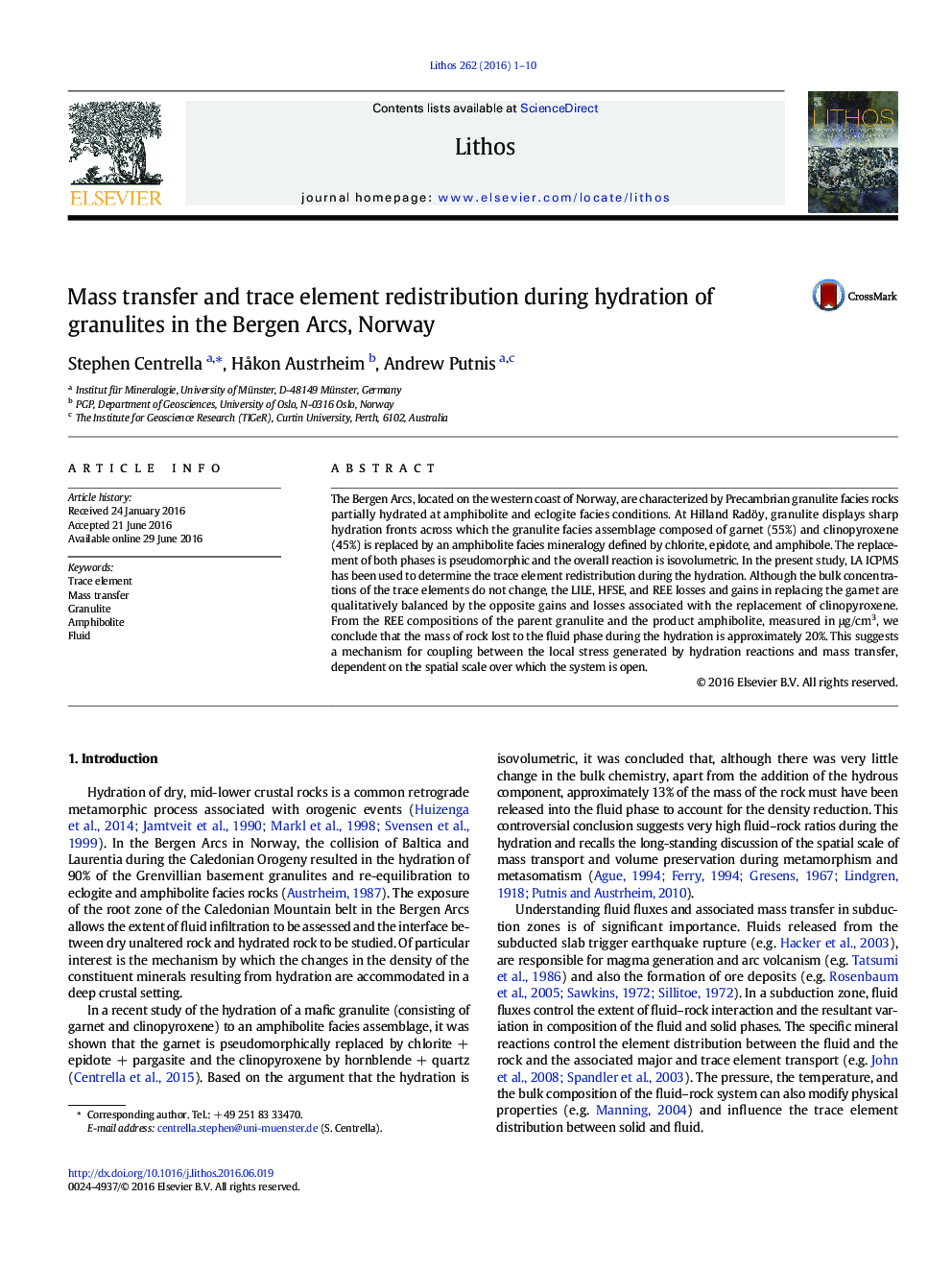| Article ID | Journal | Published Year | Pages | File Type |
|---|---|---|---|---|
| 6440471 | Lithos | 2016 | 10 Pages |
Abstract
The Bergen Arcs, located on the western coast of Norway, are characterized by Precambrian granulite facies rocks partially hydrated at amphibolite and eclogite facies conditions. At Hilland Radöy, granulite displays sharp hydration fronts across which the granulite facies assemblage composed of garnet (55%) and clinopyroxene (45%) is replaced by an amphibolite facies mineralogy defined by chlorite, epidote, and amphibole. The replacement of both phases is pseudomorphic and the overall reaction is isovolumetric. In the present study, LA ICPMS has been used to determine the trace element redistribution during the hydration. Although the bulk concentrations of the trace elements do not change, the LILE, HFSE, and REE losses and gains in replacing the garnet are qualitatively balanced by the opposite gains and losses associated with the replacement of clinopyroxene. From the REE compositions of the parent granulite and the product amphibolite, measured in μg/cm3, we conclude that the mass of rock lost to the fluid phase during the hydration is approximately 20%. This suggests a mechanism for coupling between the local stress generated by hydration reactions and mass transfer, dependent on the spatial scale over which the system is open.
Related Topics
Physical Sciences and Engineering
Earth and Planetary Sciences
Geochemistry and Petrology
Authors
Stephen Centrella, HÃ¥kon Austrheim, Andrew Putnis,
